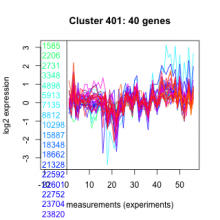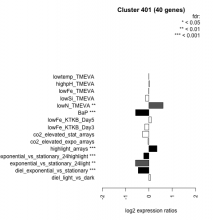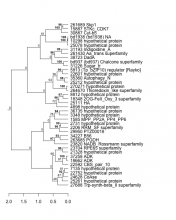34227 B56Thalassiosira pseudonana
| Chromosome | Product | Transcript Start | End | Strand | Short Name | |
|---|---|---|---|---|---|---|
| 34227 | chr_5 | B56 | 668711 | 670199 | - | B56 |
| NCBI ID | Ensembl Genomes exon ID |
|---|---|
| 7451793 | Thaps34227.1, Thaps34227.2 |
| Expression Profile | Conditional Changes | Cluster Dendrogram | Discovered Potential cis-Regulatory Motifs |
|---|---|---|---|
Thaps_hclust_0401 |
 |
 |
   |
| T. pseudonana | P. tricornutum | P. tricornutum DiatomCyc | F. cylindrus | Pseudo-nitzschia multiseries | E. huxleyi | C. reinhardtii | A. thaliana | P. sojae |
|---|---|---|---|---|---|---|---|---|
| Not available | PHATRDRAFT_11741 | PHATRDRAFT_11741 | 276993 | 299445 | 434541 | Cre13.g567800.t1.2 | AT3G26020.2 | 564434 |

Add comment